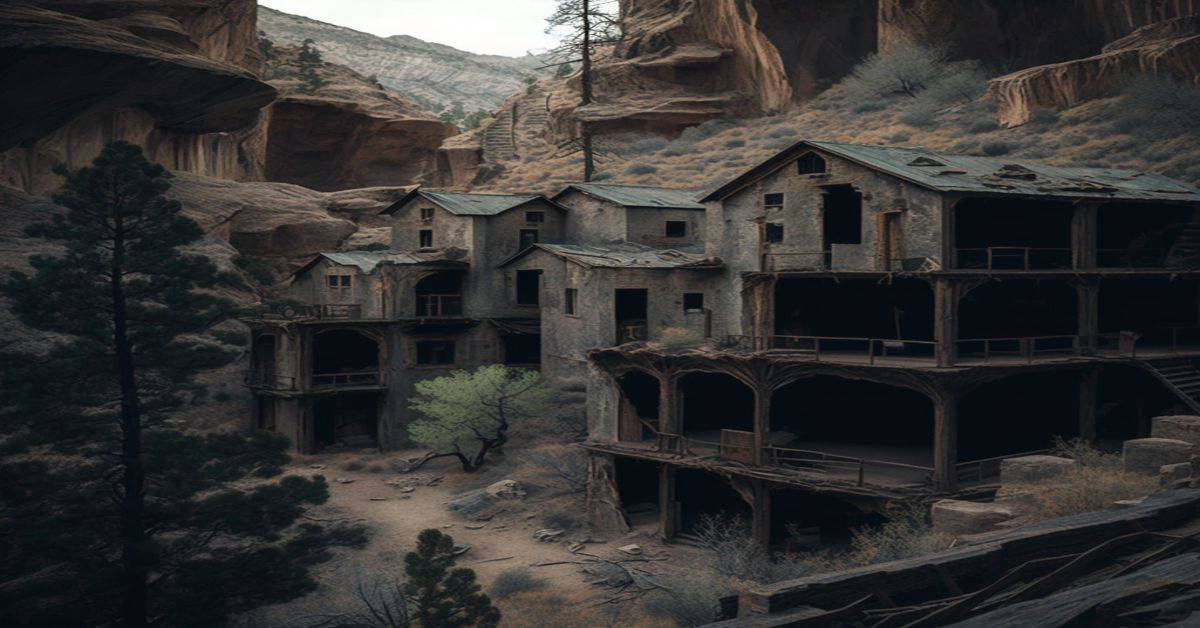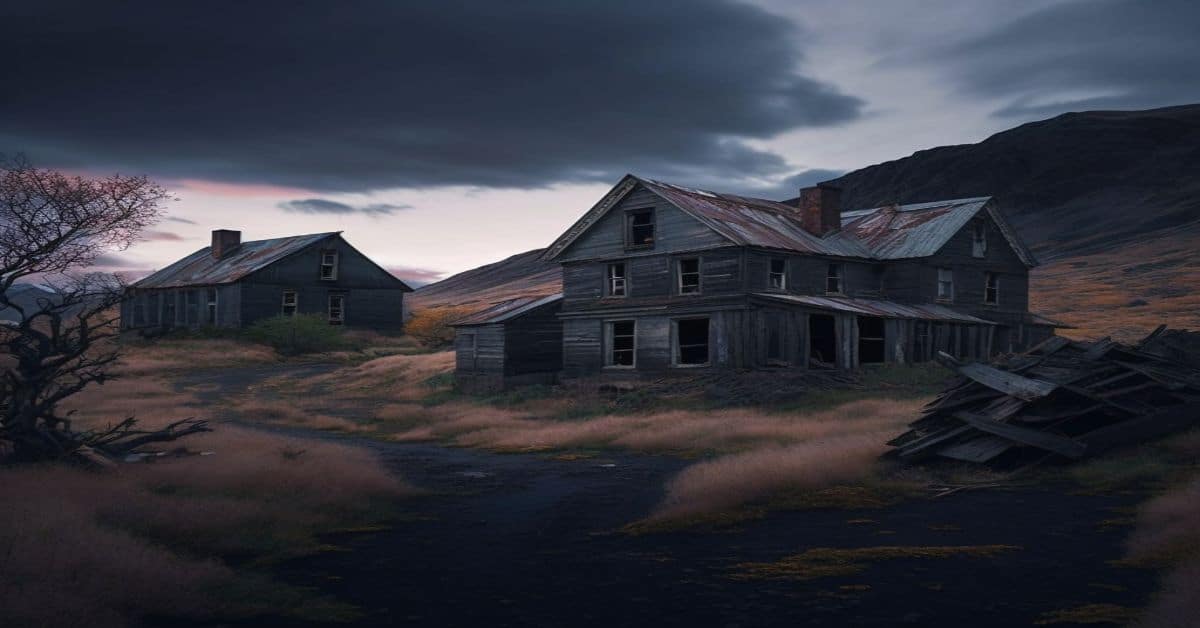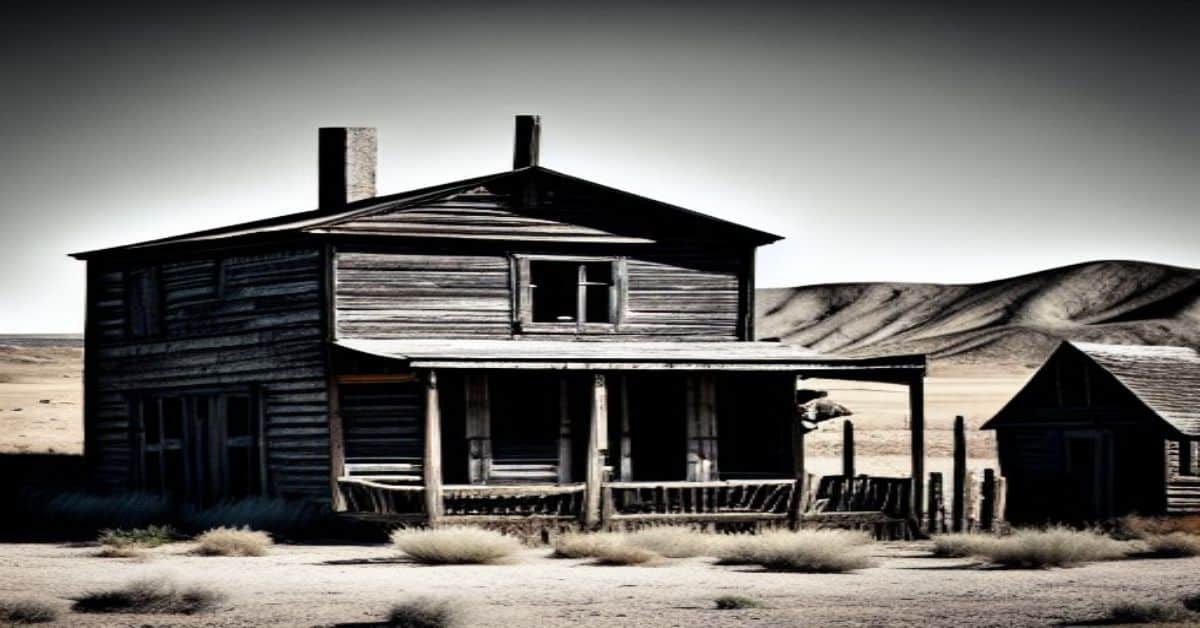On the rugged and picturesque terrain of Garfield County in Utah lie several ghost towns that witness the state’s rich history. These abandoned settlements, each with unique stories, offer a haunting glimpse into the past and are a must-visit for history buffs and adventurous travelers alike.
From Asay Town to Osiris, Georgetown to Widtsoe Junction, these ghost towns are a testament to the hardships and resilience of the pioneers who once called this land home. Amidst the stunning natural beauty of Garfield County, these ghost towns stand out as a reminder of the area’s rich cultural heritage.
As you explore these abandoned settlements, you’ll be transported back in time to an era when the West was still being settled and life was far from easy. But despite the harsh living conditions, the people who lived here persevered, leaving behind a legacy that is still felt today.
In this article, we’ll take a closer look at the fascinating history of Garfield County’s ghost towns and provide you with all the information you need to plan your visit. So get ready to discover the hidden treasures of Utah’s past and embark on a journey through time and history.
Key Takeaways
- Garfield County, Utah is home to several ghost towns that were once thriving mining and farming communities.
- These ghost towns serve as a testament to the hardships and resilience of pioneers and have significant historical value.
- Visitors can engage in outdoor recreation, historical tours, and visit local museums to learn about the hidden treasures of Utah’s past.
- Preservation efforts by various organizations ensure that these ghost towns continue to serve as a haunting glimpse into the past and a legacy of perseverance and cultural heritage.
Historical Background
The historical background of Garfield County’s ghost towns, including Asay Town, Clifton, Eagle City, Losee, Georgetown, Osiris, and Widtsoe Junction, can be likened to a faded and weathered tapestry, where the threads of the past are still visible, but the intricate designs have become blurred with time.
These once-thriving mining and farming communities have since been abandoned, leaving only remnants of structures and artifacts that glimpse a bygone era.
Despite their current state of disrepair, the ghost towns of Garfield County hold significant historical value, representing a time when the area was bustling with activity and prosperity.
Preservation efforts have been made to protect and restore some of the remaining structures in Garfield County’s ghost towns, hoping to preserve their historical significance for future generations.
For example, the Garfield County Historic Preservation Commission has taken on the task of identifying and documenting the county’s historic sites, including ghost towns.
Additionally, organizations like the Utah State Historical Society and the National Trust for Historic Preservation have worked to provide funding and resources for the preservation and restoration of historic structures throughout the state.
While much work remains to be done, these preservation efforts offer hope that the ghost towns of Garfield County will continue to serve as a window into Utah’s rich history.
Ghost Towns to Visit
One may explore various abandoned settlements in Garfield County by visiting several ghost towns. These ghost towns offer a glimpse into the past, showcasing the ruins and abandoned structures that once served as bustling communities.
Among the ghost towns in Garfield County are Asay Town, a former mining town once home to over 200 residents, and Georgetown, established in the late 1800s and served as a stop for stagecoaches traveling between Salt Lake City and Southern Utah.
Other ghost towns to visit in Garfield County include Osiris, which was once a railroad town that boomed in the early 1900s, and Losee, which is home to the remains of a schoolhouse, several cabins, and a cemetery.
Additionally, visitors can explore Eagle City, which was established in the 1890s as a mining town, and Widtsoe Junction, which served as a stop for the Denver and Rio Grande Western Railroad.
Exploring these ghost towns offers a unique opportunity to experience the history and culture of Garfield County, while also witnessing the remains of once-thriving communities.
Activities and Resources
Exploring the abandoned structures and ruins of former mining towns and railroad stops in Garfield County can be a fascinating and educational experience. Visitors can take part in outdoor recreation activities such as hiking and photography, while also learning about the area’s history and culture through historical tours. Many ghost towns in Garfield County also have local museums that showcase artifacts and exhibits related to the town’s past.
Outdoor recreation in Garfield County offers breathtaking views of the surrounding landscape and an opportunity to connect with nature. The area is home to various hiking trails that lead to abandoned buildings and mining sites. Additionally, visitors can participate in photography tours to capture the unique beauty of the ghost towns.
For those interested in learning more about the area’s history, historical tours are available, providing insight into the lives of the people who once inhabited these towns. Local museums in the area provide a more in-depth look at the history and culture of the ghost towns, with exhibits and artifacts that bring the past to life.
Frequently Asked Questions
What caused the decline of these ghost towns in Garfield County?
The decline of ghost towns in Garfield County, Utah can be attributed to various factors, including the exhaustion of mining resources, changes in transportation infrastructure, and the lack of cultural preservation efforts.
Are there any notable landmarks or structures still standing in these ghost towns?
Exploring ruins in Garfield County’s ghost towns reveals remnants of pioneer life, including dilapidated buildings and abandoned mines. Historical preservation efforts have been made to protect these structures, such as Georgetown’s historic schoolhouse.
Have any movies or TV shows been filmed in these ghost towns?
Several movies and TV shows have used the ghost towns of Garfield County as filming locations, including Butch Cassidy and the Sundance Kid and Westworld. These towns also offer tourist attractions, souvenirs, haunted stories, and cultural significance. Restoration efforts aim to preserve their unique architecture styles.
What were the primary industries that sustained these ghost towns during their heyday?
Mining and agriculture were the primary industries that sustained the ghost towns of Garfield County during their heyday. However, the gradual decline of these once thriving communities was due to the local economy and social structure.
Is there any local folklore or legends associated with these abandoned communities?
Local superstitions and haunted tales surround many of the abandoned communities in Garfield County, Utah. Asay Town is rumored to have a ghostly lady in white, while Osiris is said to be haunted by the spirits of miners who died in a tragic accident.


